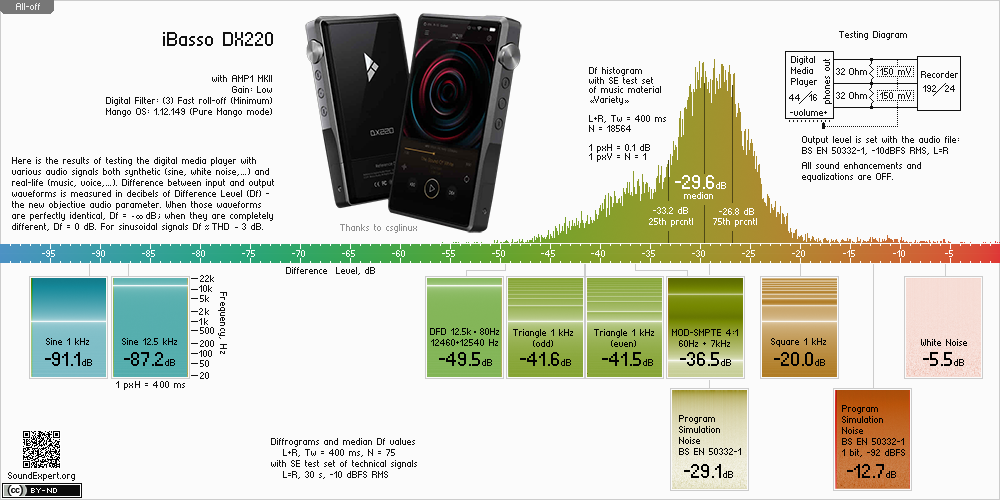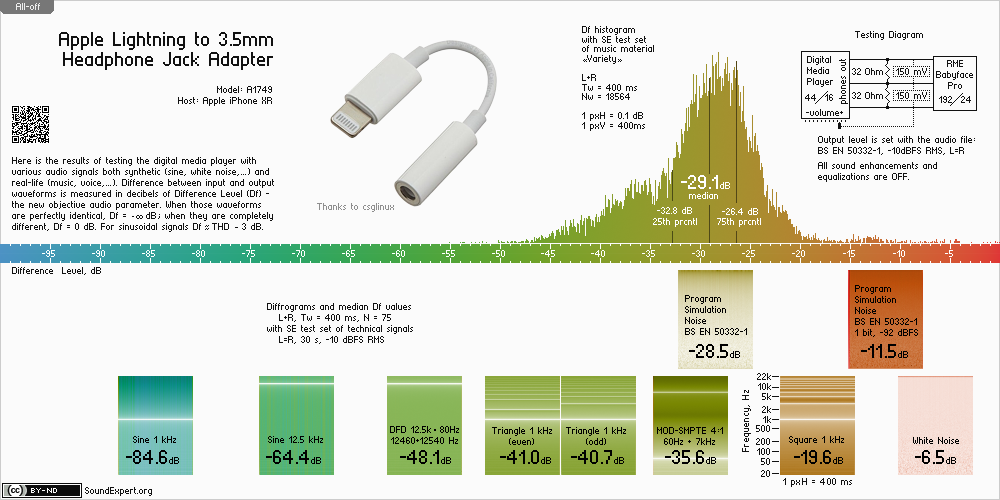Nango
Major Contributor
The Topping and the SMSL they also feature some Premium PSU, why dont they send you their models for testing pls @SMSL-Mandy @topping ???I have not found any of them improving the sound out of a DAC.
The Topping and the SMSL they also feature some Premium PSU, why dont they send you their models for testing pls @SMSL-Mandy @topping ???I have not found any of them improving the sound out of a DAC.
For which group? Us or the believers in these products? For us, we already know the answer. And the others won't listen to a complicated answer.Surely the point is whether the null (or closest to that) is audible?
I have a very premium power supply I have used for testing (SBooster). I also have lab supplies I have tested with. Nothing is gained from testing with more power supplies.The Topping and the SMSL they also feature some Premium PSU, why dont they send you their models for testing pls @SMSL-Mandy @topping ???
Yes, my point was they both mfr maybe know why they don't send-in their PSU as they also measure with the Analyzer.I have a very premium power supply I have used for testing (SBooster). I also have lab supplies I have tested with. Nothing is gained from testing with more power supplies.
Because capture drifts in each iteration so simple null test doesn't work. You can compensate for this in software but then (added to randomness of noise) you don't get infinite null. All you can say then is that they are the same to say, -85 dB. This kind of "gray" answer is not going to dissuade the believers. So you have done a lot of work for little value.
The metric has only one measurable parameter, the Difference Level (Df, dB), which measures differences between waveforms of two signals, the input and the output of some device under test (DUT) [1]. A specially-designed time-warping algorithm removes linear pitch and phase shifts from the output signal with any predefined accuracy. The algorithm finds linear pitch and phase transformation in the output signal, such that the latter has maximum correlation with the input signal. This maximum correlation Rmax determines the value of Df:
Df [dB] = 10lg(1-|Rmax|)
The time-warping operation is deterministic and produces repetitive results for any signals. Hence, Df values are objective measurements (for time-accurate DUTs, time warping is not required). Df levels can be computed with arbitrary time windows: 50ms, 400ms, 3000ms, etc.
Df levels are the lowest possible values for any two given waveforms (in digital domain). Thanks to iterative search for global minimum, which is always one and can be found with any required accuracy (currently 1e-4 dB).
Surely the point is whether the null (or closest to that) is audible?
My power was already "dirty" so didn't need to do that.
I once used my power generator to create bad waveforms and tested it on a headphone amp. It made no difference at all.
Our own @pkane has written the mother of all null comparison software: https://www.audiosciencereview.com/...test-deltawave-null-comparison-software.6633/As for capture drift, it seems @Serge Smirnoff of SoundExpert has improved on his algorithm since his original AES paper, and this is not really an issue now:
Wow, so usually all of us have such a noisy AC line at home.The first spike is at 60 Hz and that is all we want. Alas, we also get a boatload of other harmonics and noise products continuing on to the end of the 90 kHz bandwidth of this test
Wow, so usually all of us have such a noisy AC line at home.
If it was clean, there could be only multiples of 60 right?
Almost correct... absolutely no one, connected to normal mains, has a clean sine wave. Nor is this needed.
There would be no multiples of 50 (or 60)Hz when the sine was clean.
One can 'clamp' peaks and/or filter when needed but if a device needs filtering it should already be in there. When it is not the device is either cheap (skimped on needed filter components) or poorly designed.
Not all audio equipment designers are fully aware of proper designing methods.
Our own @pkane has written the mother of all null comparison software: https://www.audiosciencereview.com/...test-deltawave-null-comparison-software.6633/
Serge waited too long to update the thing.
Shared equipment and circuits is also something to think about. Whenever my laser printer runs, my LED lights start to flicker -- they're quite sensitive compared to the older halogens it replaced. And when someone vacuums upstairs (using one specific outlet), my door-bell freaking rings repeatedly! For that reason, I put a switch to manually turn the door bell off when it gets 'triggered'.
Our own @pkane has written the mother of all null comparison software: https://www.audiosciencereview.com/...test-deltawave-null-comparison-software.6633/
Serge waited too long to update the thing.


Comparison of df-measurements with m-signal (histogram) to df-measurements with white noise confirms this - some DUTs showing low (good) df levels with m-signal have awful df measurements with white noise (Apple devices in particular). So, there is no necessity to "cope" with this. In df-metric perceived audio quality is not measured with tech signals. They are for developers/manufacturers of audio equipment as they help to understand what can be improved in circuitry design.
All this misunderstanding originates from the popular false assumption - if Sine signal has lower distortion then all other signals will also have lower distortion. Df measurements clearly show that this is not true. This misconception is the main reason why traditional audio measurements correlate badly to perceived quality estimations.
I can't even read anything on his site anymore. He is the absolute epitome of all this industry's problems right now.But the Microdynamics!
Sa(i)d John Darko https://darko.audio/2019/05/fight-the-power-with-audioquests-powerquest2-3/
Cable battery packs. The horror.I've yet to see an AudioQuest product that's not a gimmick! Must be great marketing. I'd like to see testing of their directional cables with the battery packs.
I can't even read anything on his site anymore. He is the absolute epitome of all this industry's problems right now.
I meant for the believers. If they can't hear anything in the (near) null, how can they then claim that there is a difference that doesn't show in measurements but is nevertheless audible?For which group? Us or the believers in these products? For us, we already know the answer. And the others won't listen to a complicated answer.
I'd really like to see you test one of the Paul Hynes PSes <https://audiophilestyle.com/forums/topic/37373-the-paul-hynes-sr7/?tab=comments#comment-733206> <https://www.paulhynesdesign.com/products>, but doubt that anyone will send you one.I have a very premium power supply I have used for testing (SBooster). I also have lab supplies I have tested with. Nothing is gained from testing with more power supplies.
This is almost certainly too small and too cheap to be a series mode device.
